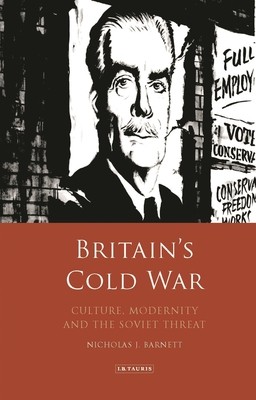
- We will send in 10–14 business days.
- Author: Nicholas Barnett
- Publisher: Bloomsbury Publishing PLC
- Year: 2018
- Pages: 304
- ISBN-10: 1784538051
- ISBN-13: 9781784538057
- Format: 14.5 x 21.8 x 2.8 cm, kieti viršeliai
- Language: English
- SAVE -10% with code: EXTRA
Reviews
Description
The cultural history of the Cold War has been characterized as an explosion of fear and paranoia, based on very little actual intelligence. Both the US and Soviet administrations have since remarked how far off the mark their predictions of the other's strengths and aims were. Yet so much of the cultural output of the period - in television, film, and literature - was concerned with the end of the world. Here, Nicholas Barnett looks at art and design, opinion polls, the Mass Observation movement, popular fiction and newspapers to show how exactly British people felt about the Soviet Union and the Cold War. In uncovering new primary source material, Barnett shows exactly how this seeped in to the art, literature, music and design of the period.
EXTRA 10 % discount with code: EXTRA
The promotion ends in 22d.20:55:21
The discount code is valid when purchasing from 10 €. Discounts do not stack.
- Author: Nicholas Barnett
- Publisher: Bloomsbury Publishing PLC
- Year: 2018
- Pages: 304
- ISBN-10: 1784538051
- ISBN-13: 9781784538057
- Format: 14.5 x 21.8 x 2.8 cm, kieti viršeliai
- Language: English English
The cultural history of the Cold War has been characterized as an explosion of fear and paranoia, based on very little actual intelligence. Both the US and Soviet administrations have since remarked how far off the mark their predictions of the other's strengths and aims were. Yet so much of the cultural output of the period - in television, film, and literature - was concerned with the end of the world. Here, Nicholas Barnett looks at art and design, opinion polls, the Mass Observation movement, popular fiction and newspapers to show how exactly British people felt about the Soviet Union and the Cold War. In uncovering new primary source material, Barnett shows exactly how this seeped in to the art, literature, music and design of the period.


Reviews